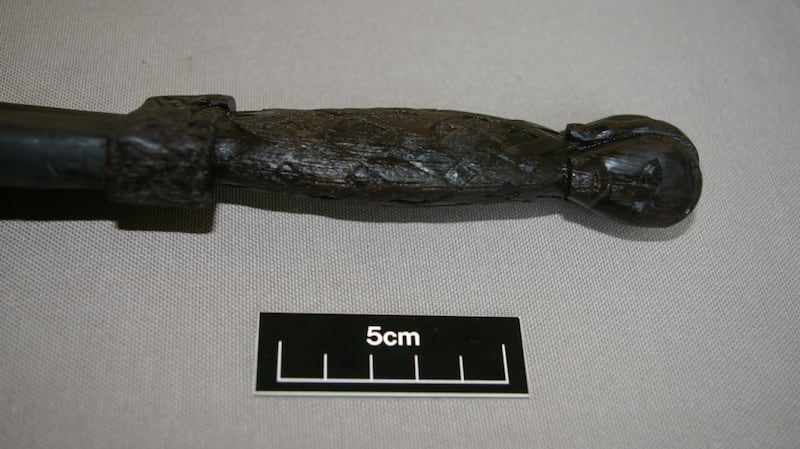A 1,000-year-old Viking weaver's sword has been discovered by archaeologists at the historic site of the former Beamish and Crawford brewery in Cork city.
The perfectly-preserved wooden sword is a little over 30cm in length, made entirely from yew, and features carved human faces typical of the Ringerike style of Viking art, dating it roughly to the late 11th century.
Consultant archaeologist Dr Maurice Hurley said it was one of several artefacts of "exceptional significance" unearthed during recent excavations at the South Main Street site, which also revealed intact ground plans of 19 Viking houses, remnants of central hearths and bedding material.
0 of 3

“For a long time there was a belief that the strongest Viking influence was on Dublin and Waterford, but the full spectrum of evidence shows that Cork was in the same cultural sphere and that its development was very similar,” he said.
“A couple of objects similar to the weaver’s sword have been found in Wood Quay [IN DUBLIN], but nothing of the quality of craftsmanship and preservation of this one,” said Dr Hurley, adding that it was “quite miraculous” how the various wooden items had survived underground in such pristine condition.
“The sword was used probably by women, to hammer threads into place on a loom; the pointed end is for picking up the threads for pattern-making. It’s highly decorated - the Vikings decorated every utilitarian object,” he said.
One of the other artefacts found was a wooden thread-winder carved with two horses’ heads, also associated with fabric weaving.
The eight-month archaeological dig led by Dr Hurley finished in June, but developers BAM Ireland have not given any indication yet when building might begin or end at the site.

Plans for a 6,000-seat multi-functional events centre at the site have been bedevilled by design changes, delays and massive financial overruns, with current estimates predicting the project could exceed €73 million.
So far, BAM Ireland and its partners Live Nation are set to provide €33 million towards the project, with the Government contributing €12 million and Cork City Council €8 million. BAM Ireland has asked Minister for Finance Paschal Donohoe to allocate an extra €12 million capital developmentin the forthcoming budget.
Cork Lord Mayor Cllr Tony Fitzgerald said it had been an "magical experience" to hold a Viking dagger which had been buried for so long.

“The moisture on the dagger was fresh; it was in perfect condition,” he said, predicting “a very strong public interest” when the items go on display, which could be as early as February 2018.
The Viking artefacts are currently undergoing post-excavation analysis by conservationists at the National Museum of Ireland.
Curator of Cork Public Museum Daniel Breen said he would love to organise an exhibition on the Viking influence in Cork, but said, " it's early days yet; exposure to too much oxygen would be detrimental without chemical treatment first".















